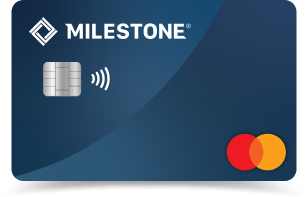Capital One just made it harder to stack big bonuses from their two flagship travel cards.
Historically, people would grab a Capital One Venture card, earn the welcome bonus, then (after some time) apply for the Venture X and earn that bonus too — or do it in the other order. Capital One already had a “once every 48 months” rule for getting a new cardmember bonus on a given product, but Venture and Venture X were treated like different products.
Now? Capital One updated the language, and it links the two cards together for bonus eligibility.
Here’s the key line you’ll start seeing in the terms:
“You are not eligible for this product if you have received a new cardmember bonus for the Capital One Venture card or the Capital One Venture X card in the past 48 months.”
Let’s break down what that means in plain English, why it matters, and how to play it going forward.
What changed?
Before:
- Venture and Venture X were basically considered separate products.
- You could, in practice, get the Venture bonus, then later get the Venture X bonus (or vice versa), even if it was within 48 months, depending on approval and internal factors.
- The terms typically said you weren’t eligible if you’d gotten a bonus on “this product” in the past 48 months.
Now:
- The updated language explicitly groups Venture and Venture X.
- If you’ve gotten a bonus on either one in the last 48 months, you’re not supposed to get the bonus on the other.
That’s Capital One telling you: “Venture” and “Venture X” are one bonus family.
In other words, one bonus every 48 months, total, across both.
What is the “48-month rule,” exactly?
Capital One’s 48-month rule = you can only receive a new cardmember bonus once every 48 months.
That 48 months is roughly four years. So if you earned, say, a Venture X welcome bonus 18 months ago, and you now apply for Venture, technically their terms say you’re not eligible for that new Venture bonus. You can still be approved for the card — you just wouldn’t qualify for the bonus.
Important nuance: Capital One can (and often does) approve you for a card without promising you a bonus. That means:
- You might go through a hard pull.
- You might get the card.
- You might end up with no welcome miles, because you were never technically eligible.
So you really do want to know your status before you apply.
Is Capital One enforcing this already?
Short answer: it’s not totally clear yet.
People are already reporting mixed data points:
- Some applicants say their final “accept offer” screen still only mentioned being ineligible if they’d gotten a bonus on “this product” in the last 48 months. In other words, they didn’t see the stricter shared-family wording yet, and their tracker is showing the bonus as active after approval.
- Other folks are seeing the new, combined language in the terms.
This happens a lot when issuers roll out new rules. The legal language updates first, internal systems catch up later, and enforcement tightens over time.
What that means for you:
- Just because someone else slipped through today does not mean you will tomorrow.
- You should assume Capital One will enforce the stricter interpretation going forward.
If you’re about to apply and you’re within 48 months of getting either Venture or Venture X’s bonus, treat the new shared 48-month cooldown as real.
Does this affect the Venture X Business card?
Capital One also has small business products, and historically issuers sometimes treat business and personal lines as different “families.”
So far, what Capital One actually spelled out in writing is about the personal Venture and Venture X. The updated sentence specifically names those two cards.
There’s no guarantee business cards will stay separate forever — banks love to “clarify” rules later — but right now, the stated 48-month linking is between Venture and Venture X on the personal side.
If you’re eyeing a business card for a welcome bonus, you may still be in the clear. For now.
Why Capital One is doing this
There are two obvious reasons:
(A) Bonus cost control
Venture and Venture X have both had aggressive welcome offers. Travel cards are expensive to subsidize, and Capital One has been going hard in the premium space. Merging the two cards into one “bonus family” reduces how often they have to pay out tens of thousands of miles to the same person.
Chase and Amex have played versions of this game for years (think “once per lifetime” at Amex on many cards, or Chase’s Sapphire family rules). Capital One is basically catching up.
(B) They’re positioning Venture and Venture X as tiers of one ecosystem
Even though you can’t just freely product change in both directions (Capital One is notoriously stubborn about upgrades/downgrades), Venture and Venture X are clearly marketed as “good” and “premium” flavors of the same travel currency. So from Capital One’s point of view, letting you grab both bonuses is double dipping.
So… what’s the play now?
Here’s how I’d think about it going forward:
Scenario 1: You haven’t had either Venture or Venture X bonus in the last 48 months
You’re in the best position.
- Pick the card that fits you better first.
- Venture X usually carries a higher annual fee but bigger perks, like lounge access and an annual travel credit.
- Venture usually has a lower annual fee and is easier to keep long-term if you’re fee-sensitive.
Whichever one you choose now will likely lock you out of the other card’s SUB for four years. So choose with intention instead of just grabbing the lower bar first.
Scenario 2: You got Venture already and you’re under 48 months
Applying for Venture X right now is risky if your only goal is the bonus. Capital One’s new terms say you’re not eligible. You might still get approved, but you may walk away with no bonus at all.
If you still want Venture X for its ongoing perks (Priority Pass-style lounge access at Capital One lounges/partners, annual travel credit, decent earn rates), go for it — just assume you’re applying as if there is no welcome bonus.
Scenario 3: You got Venture X already and you’re under 48 months
Same thing. Don’t expect a Venture bonus. If you want a lower-fee card for long-term use, you might be better off waiting until you can (hopefully) product change later instead of burning a new application on a card that won’t bonus you.
Scenario 4: You’re at like 45–47 months since your last Capital One travel bonus
Yeah, awkward. You’re probably going to have to cool off, because Capital One is using “48 months,” not “almost 48 months.” If you apply early and they enforce the rule, you blew a hard pull for no SUB.
Scenario 5: You’ve never been approved for Capital One at all
Some people get insta-love from Capital One. Other people swear it’s tougher than Amex or Chase despite perfect credit.
Capital One is famous for:
- pulling multiple bureaus,
- being weird about approvals,
- and being stingy with repeat approvals.
So if you’ve never gotten in with them before, this might be your one clean shot at a Venture-family SUB. Don’t waste it by applying for the “starter” version if what you really want is Venture X perks.
Is this a big deal?
Yep. This is Capital One moving closer to Chase Sapphire-style restrictions.
Chase says: no, you don’t get Sapphire Preferred and then Sapphire Reserve bonuses back-to-back. You get one Sapphire bonus every 48 months. Capital One is now basically saying the same thing for Venture and Venture X.
The difference is: Chase will usually tell you up front with a clear popup that you’re not eligible for the bonus before you continue. Capital One… doesn’t always communicate that cleanly, and historically they’ll still happily run your credit and approve you.
That’s why this is annoying.
Now you have to self-police.
Bottom line
Capital One updated the terms to say that the Venture and Venture X cards share one 48-month signup bonus clock. If you’ve gotten a new cardmember bonus on either one in the past four years, you’re “not eligible for this product.”
Practically, that means:
- No more easy “double dip” between Venture and Venture X.
- You need to choose your first Capital One travel card strategically, because it’s likely the only personal Venture-family SUB you’ll see for four years.
- If you’re already inside that 48-month window from your last bonus, you can still apply for the other card — but you should assume you won’t get a welcome bonus and that Capital One will still happily pull your credit.
Is it fun? No.
Is it surprising? Not really. Capital One watched people farm both cards. They don’t like that. Now the rules say so.
If you’re brand new to Capital One and you’ve never gotten a Venture or Venture X bonus, this is probably your best shot. Pick the card that gives you the perks you actually want long-term, not just the lowest spend requirement.






















